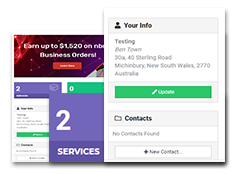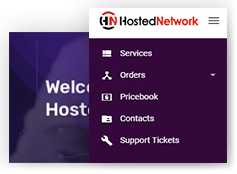I have been quite vocal around the shifting tides of offerings of MSPs (Managed Service Providers) to their clients. I wanted to share reflection of where we have come from in my time in the industry, to what is happening now so that we can understand as an industry where it is going next.
One of the top 3 business challenges all MSPs are telling me is that it has been so hard to get leads for new business. Quite simply many of us don’t understand the value we provide to our clients, and for many of us we are in our clients because we always have been and maintain fantastic relationships (Which is a huge credit to an introverted industry), there is a very real threat to our businesses if we continue to focus on what we have always done.
I have been observing the commoditisation and change of needs for our clients but many of us aren’t aware of what is happening. So I thought I would share what I am seeing so we can get ahead of these challenges and be on the front foot of new offerings in a changing market as we head towards being TSPs (Technology Service Providers)
I have been in the MSP industry since 2011, I started out in Sales and Account Management and was tasked with converting clients to Managed Services and converting to BEPOS (Now Office 365)
Back then the majority of IT Service Providers were all break fix, we had only just really started to embrace the PSA and RMM tools, most of us didn’t have standard stacks, technology was extremely infrastructure heavy, software licensing was complex so our value was very apparent to clients – They needed our help to not only create stability in their networks, but to help them navigate the world of technology. At this time owners and C-Suite were all the Baby Boomer generation, with Gen X being the next level leaders starting to step up. There were far fewer IT Providers at this time and hardly any Small Businesses had a provider.
Back then I observed the need of MSPs to have far more level 3s and level 2s as it was a complex world. We were billing our clients by the hour for support and projects so if we didn’t have the skills, clients simply wouldn’t pay. The typical MSPs services tickets were something like 45% L1, 30% L2 and 25% L3. We had to hire really technical people to service our client base. Majority of support was still being provided onsite as that is what clients demanded and expected.
It wasn’t until 2015/2016 that I observed the majority of the industry making real efforts in Australia to convert their clients to Managed Services and starting to embrace Office 365 (Mainly by force due to the fact we couldn’t sell SBS Servers anymore) this is where the shift really started to begin.
As we adopted recurring services as an industry, it forced us all to become more mature as we were directly carrying all of the labour risk, more providers were changing to the recurring model and the Tools for MSPs to manage clients started to become more numerous and beneficial. Gen Xers were starting to become the predominant Owners and C-Suite level staff. MSPs were becoming more prevalent with many of us starting to see fewer clients sign ups, many of us thought this was us being more picky in only taking Managed Service Clients, but it was also the rise of more and more providers in the market and us reaching our natural sphere of influence not having sales and marketing regimes.
Our PSAs and RMMs had become embedded in our business practices, we were standardising our stacks and technology was becoming simpler. The typical MSPs services tickets were something like 50% L1, 30% L2 and 20% L3, our service issues were starting to become simpler. Majority of support had shifted to being provided remotely, with us still predominantly providing instant support when clients call in.
We had shut ourselves off to hiring younger trainees and focused on hiring experienced L1s in to L2 roles and stopped developing people. With IT Glue coming onto the scene around this time, we started documenting things, but due to our focus on senior people weren’t looking at how to streamline and automate what we were doing, just relying on good people to do things efficiently from experience.
Over the next few years, the majority of the industry was really embracing the conversion to Managed Services and it has become the norm to provide recurring services and standardised stack, clients were starting to embrace shadow technology as it has become so much easier to purchase business technology solutions and get it up and running. The millennials are becoming the line managers and department heads making different purchasing decisions.
Then Covid happened, which caused the speed of adoption of cloud technology to enable work from home, we all got extremely busy with projects to convert everyone to more solutions reducing the infrastructure for most small business to the bare minimum in offices.
We are still busy but don’t realise what has happened to us with small business embracing the cloud, Which they should, it is some empowering for a small business!
So what is actually happening now?
The market is saturated with MSPs and nearly all small businesses have a provider, so we are all struggling to get new leads. Clients are embedded with their providers, its a hassle to change when all MSPs basically say and do the same thing (Check out 5 MSP websites if you don’t believe me), so takes a much bigger event for them to move.
The typical MSPs services tickets are now around 65% L1, 30% L2 and 5% L3, we have shifted to support being provided after a client has emailed us, and we have begun rolling out client portals.
Our service issues are generally limited to outlook, printer issues, user management and connectivity. We have all been struggling to higher L3s and experienced L2s because of our mindset 6-7 years ago, but when we look at the data the type of work we are doing is simpler but because we haven’t focused on streamlining and automating for consistency it has been hard to shift the work to the more junior people because the seniors have been siloing their skills.
Most clients have more work from home and hyrbid workers, there are smaller infrastructure footprints. Gone are the days of massive networks with multiple physical servers, on-prem pbx etc. Everyone is using M365 and cloud voip, with line of business applications in the cloud hosted by the vendors.
Clients are doing more themselves, they are buying and managing their own line of business apps and we don’t provide any value to them with this. Majority of the applications we don’t even know how to backup of create business continuity for,
Imagine someone from a client of your from the finance department rang your helpdesk to ask for help with Xero, would any of your current Techs be able to provide any valuable assistance to the client?
We have built our industry on stability of environments, we are really good at keeping the lights on. That is why we are getting super excited about technical security controls, which are extremely important for the industry but the manner in which we are doing it is quickly becoming commoditised as well.
We are quickly becoming technology brokers, but we are thinking are thinking we are high value professional services. What this actually means is that we keep trying to cram more and more ‘value’ into our current offerings for free without thinking about how we are devaluing potentially highly profitable service. vCIO service are a fantastic example of this.
We have a great amount of opportunity in the market to provide higher value (Which I will share another article soon).
Here are 4 things you can look at to modernise:
1. Split out and show the client what you are actually doing for them. We are all rushing to minimal transparency with the client, bundling everything we do into one price, so the client doesn’t pick it apart and we lose revenue. That really points to the lack of value we are truly providing. What is wrong with splitting out IT Support to being cheaper per seat, showing cloud administration as a service, Advice/vCIO services as a fixed fee etc? It is only an issue if we can’t sell our value and back it up, this sort of approach allows us to maintain competitiveness in the market while enabling higher value service offerings. Show what you do!
2. Increase your stickiness by creating a central portal for your clients business, we have started to roll out clients portals but are doing a really poor job. We don’t go and train our clients on use and advantages (We don’t turn off email as an option so why would someone change habits?), this is because we are doing it for our benefit not the clients. Think about the client experience, why would you use a portal? I would personally only use one if I got more transparent information, I could easily navigate to things I needed for my job (process and systems), approve things easily and undertake training. If it is only for logging tickets I will stick to email, even thought I despise email! Make your client portals a valuable experience for your clients
3. Support methods are so outdated! I am younger, I am busy! MSPs are terrible at accounting for my work because they don’t understand, randomly calling me won’t get results unless it is support urgent (which most IT issues aren’t anymore). Why can’t I book a time and have someone do it when I am available? Why can’t you talk to me via chat and remote in when necessary so I can do other work, even jump on my smart phone so I can keep doing some work? Imagine being able to reduce your non-billable resources by me submitting a ticket that is automatically triaged by Tribu, using Timezest to send me a Scheduling link and your Techs chatting with me and it automatically recording the jobs notes and what they do, how much more efficient would that be while I get a better service?
4. Self-service options, why do I have to contact a help desk to get my password reset? Why do I have to contact you to create or remove a user? Why do I need to contact you to setup a printer? There is so much we could automate and put in front of the client to manage themselves, we won’t do ourselves out of a job with this, but we aren’t thinking creatively with this. Imagine if we shifted that low level work to the clients line management so they were empowered, and we were focusing on helping them better utilise their technology, how valuable would that be?
There are so many new services and offerings we could be building, but none of us are doing this because we are stuck in the past, and are so busy managing bushfires in our business because our operations aren’t mature enough.
If you don’t know where to start, focus on stabilising your own business and getting it to a maturity level that there are processes that enable each business pillar to be managed by a leader.
The market is shifting so quickly, if you don’t have a stable well run business it is going to be very difficult to keep up.
About the author

James Davis is the Director of Pax8 Academy Asia. Originally from Canberra, he recently moved as far south as he could to Hobart. He joined the Sea-Level family in 2020 to grow the Sea-Level Operations offering locally in the APAC Region, joining Pax8 in May 2022 to elevate the industry through education.
James is a coach that has over 16 years industry experience in owning and managing SMBs. His core purpose is “To create freedom from chaos from the lives of others so they can thrive and grow”.
He values personal development, always trying to learn something new to build his body of knowledge to grow as a person and leader. James tries to share his knowledge and experience as much as possible, believing in the go-giver mentality.
To know more about visit: https://www.linkedin.com/in/thejamesdavisaus/ and https://www.pax8.com/en-apac/
 Contact us
Contact us  Partner Login
Partner Login  Service Status
Service Status 


 September 14, 2022
September 14, 2022
 James Davis
James Davis
 5 mins
5 mins